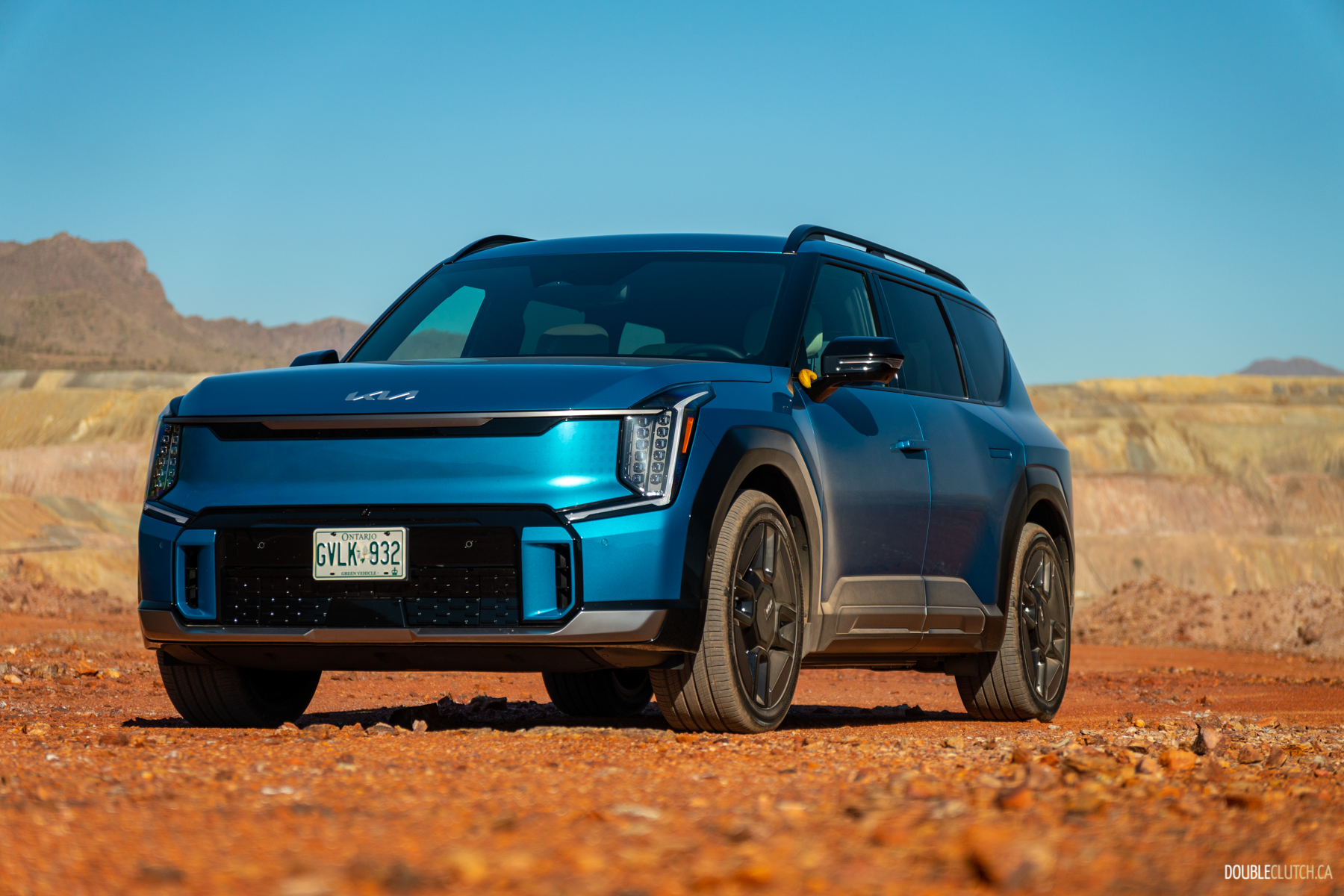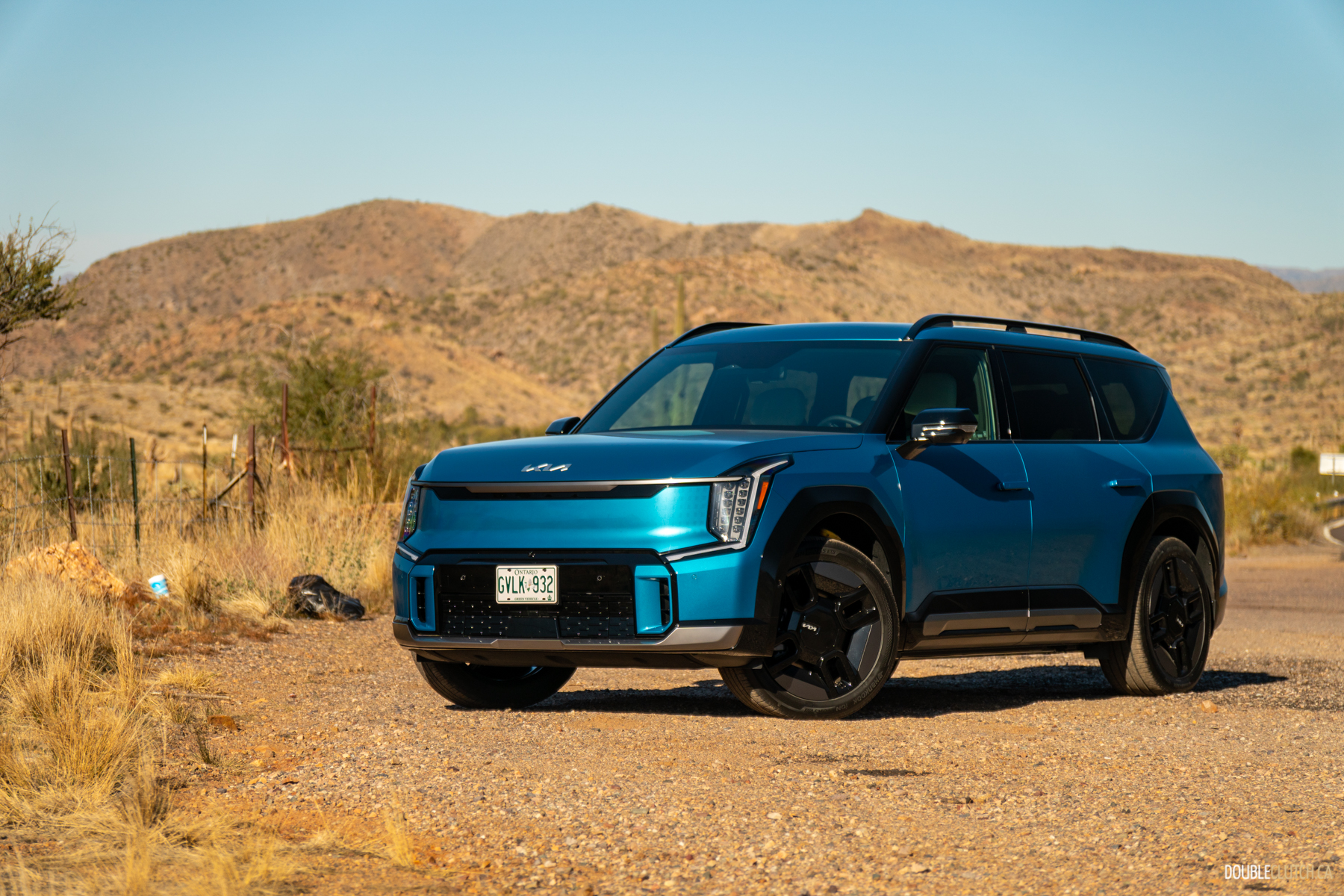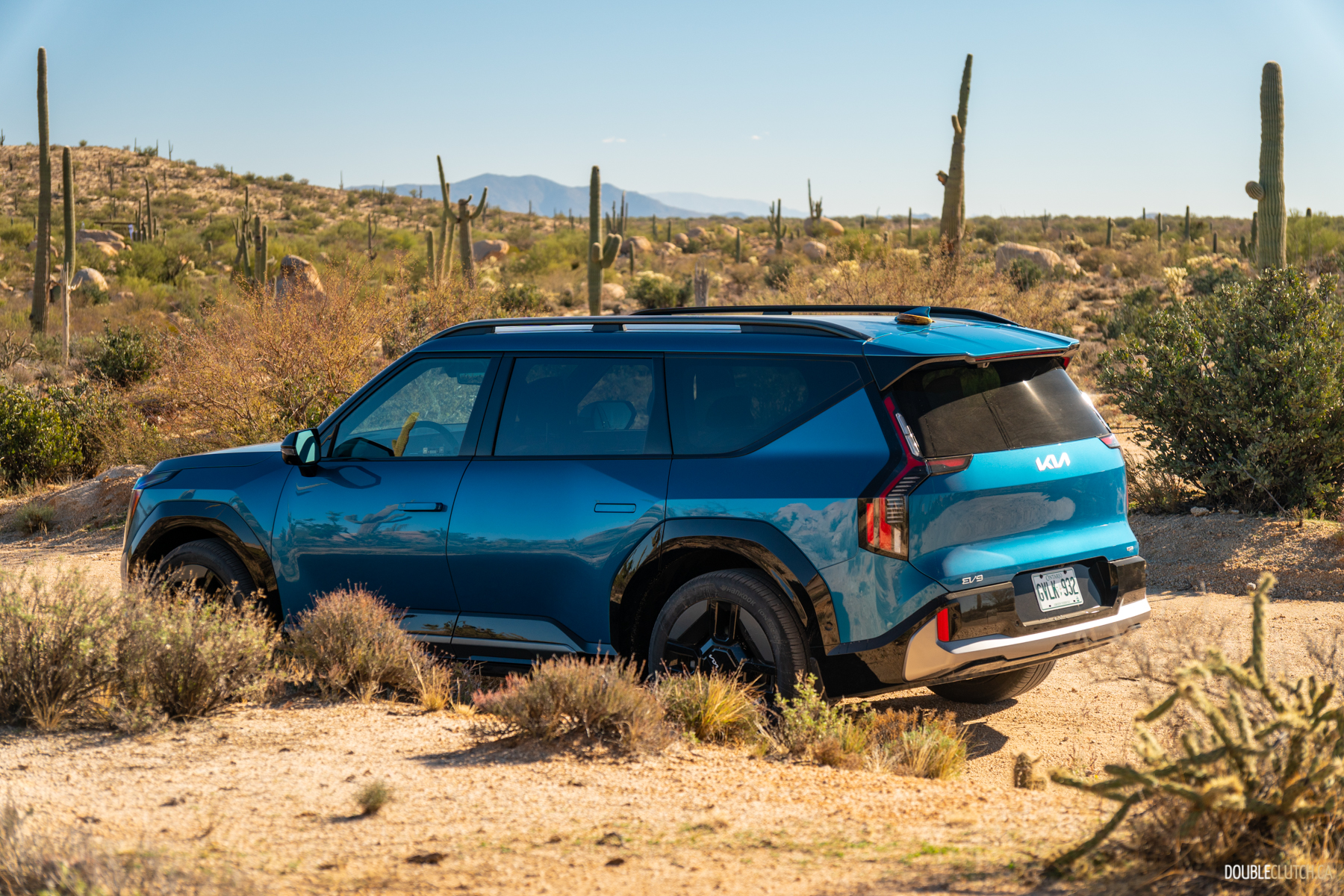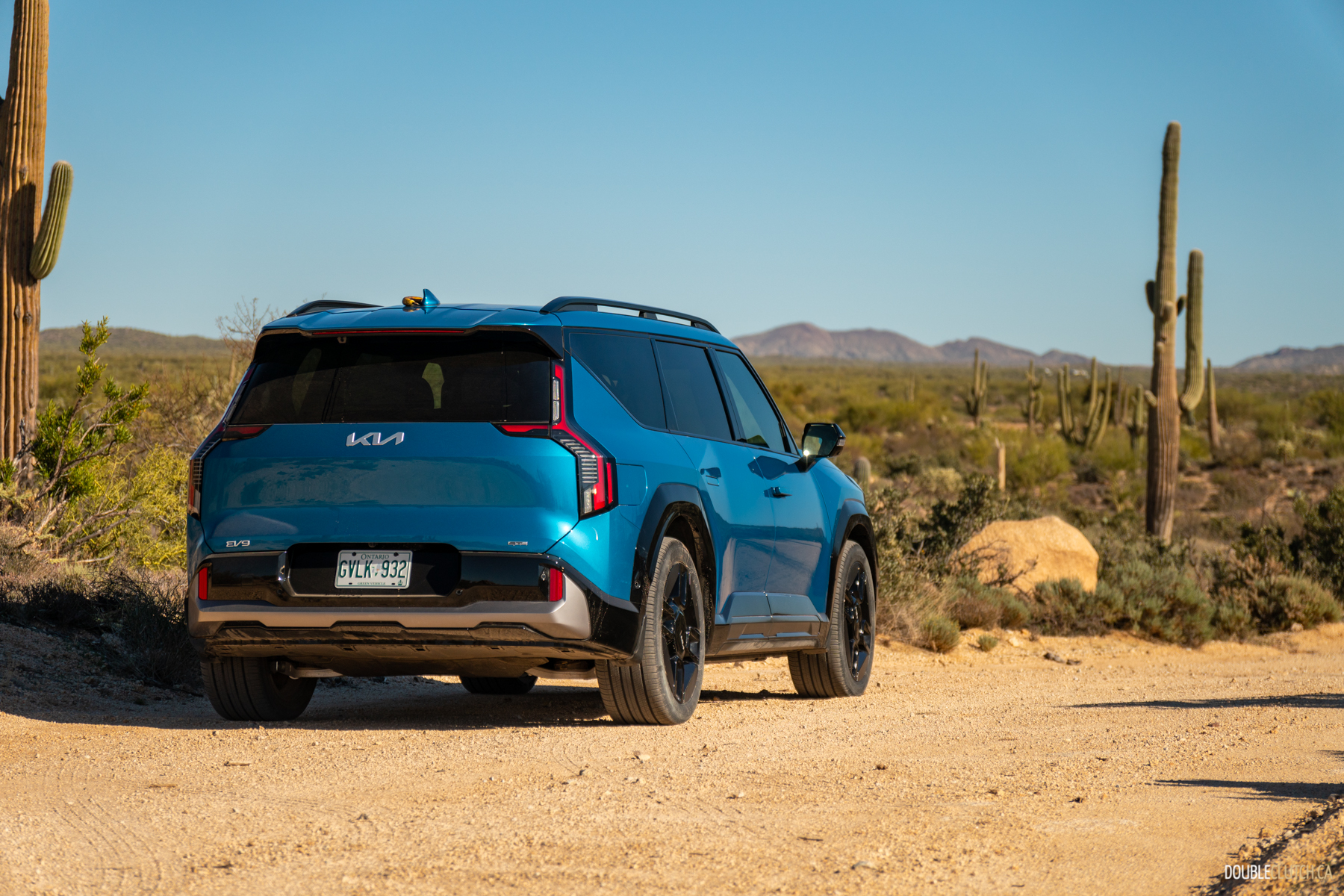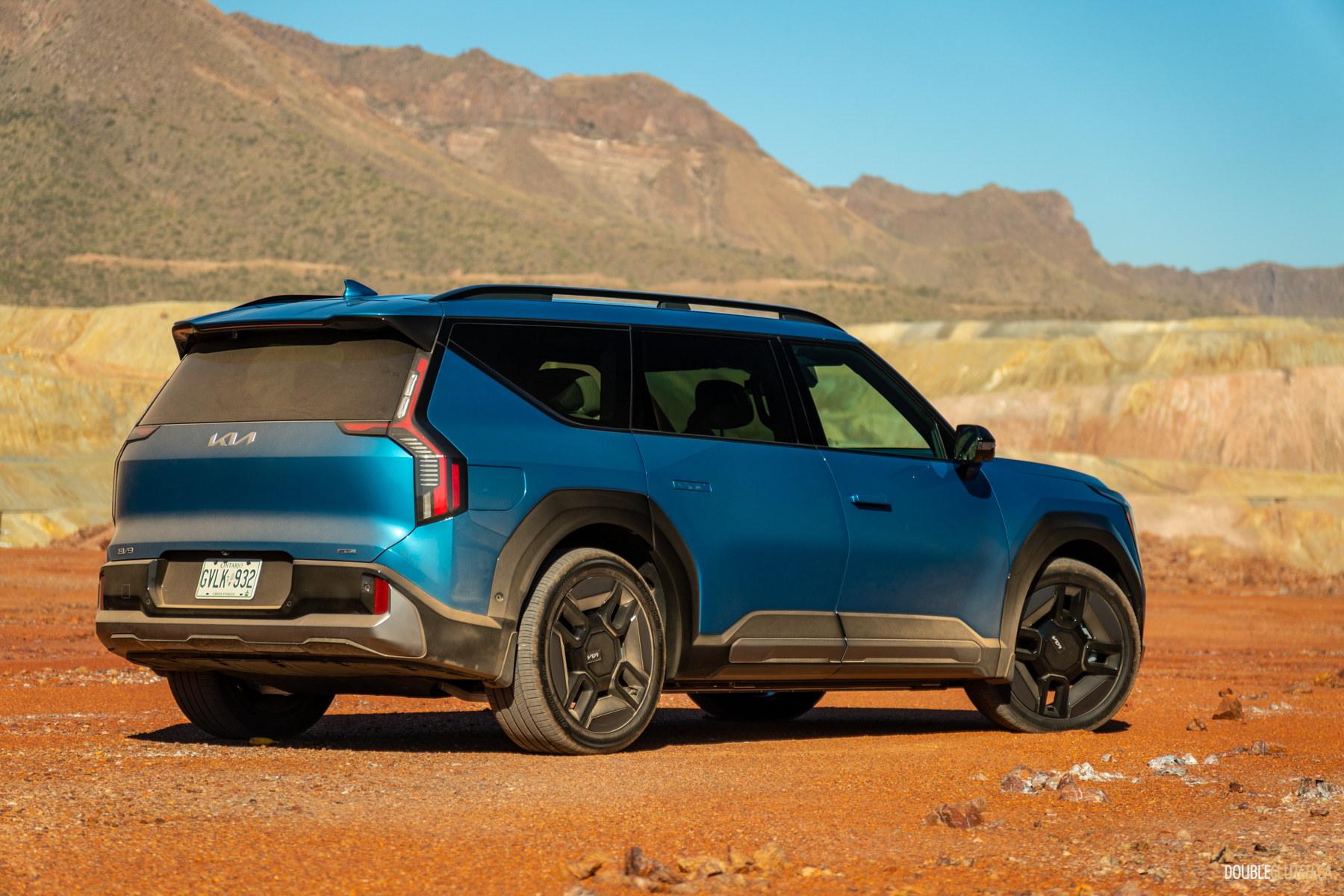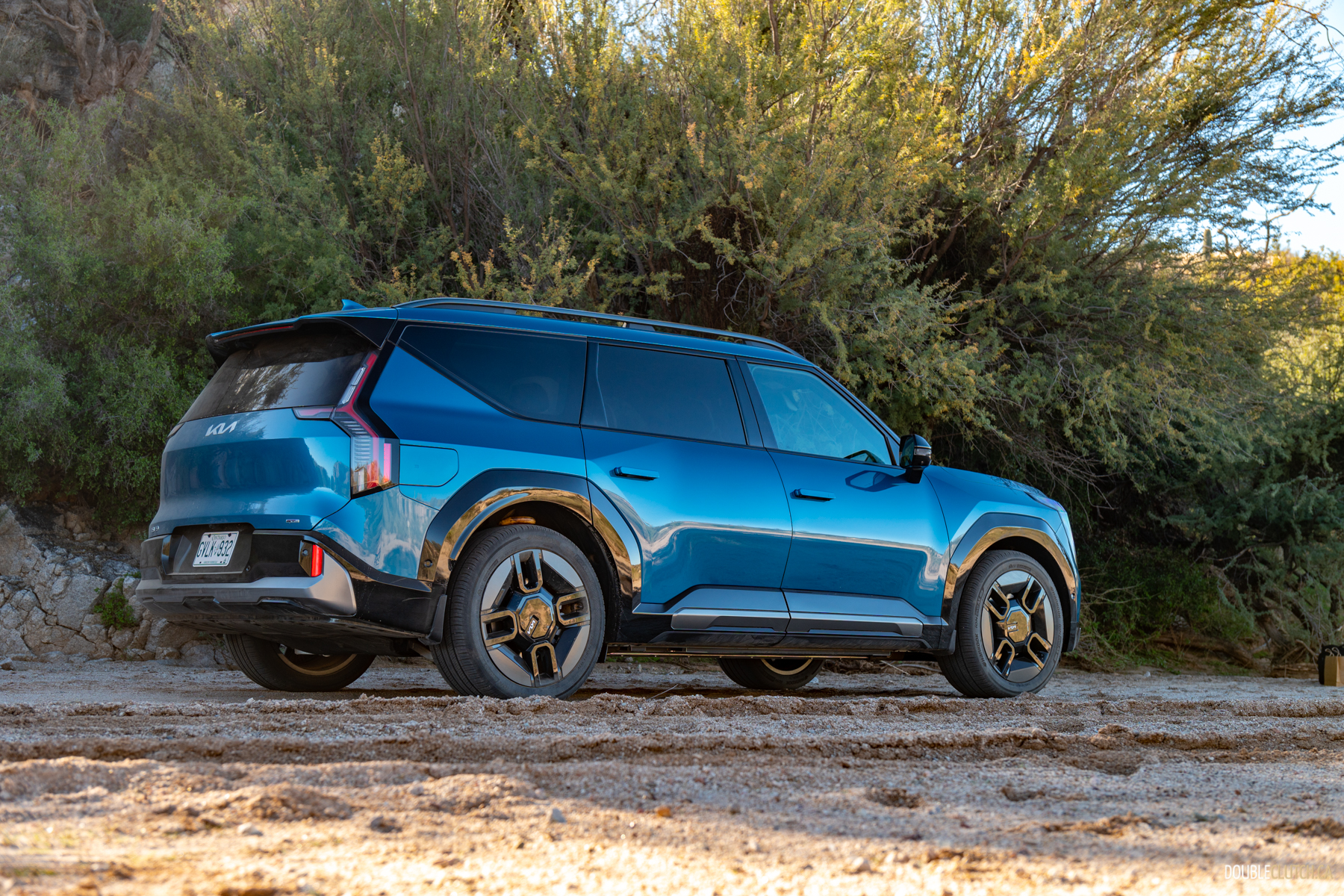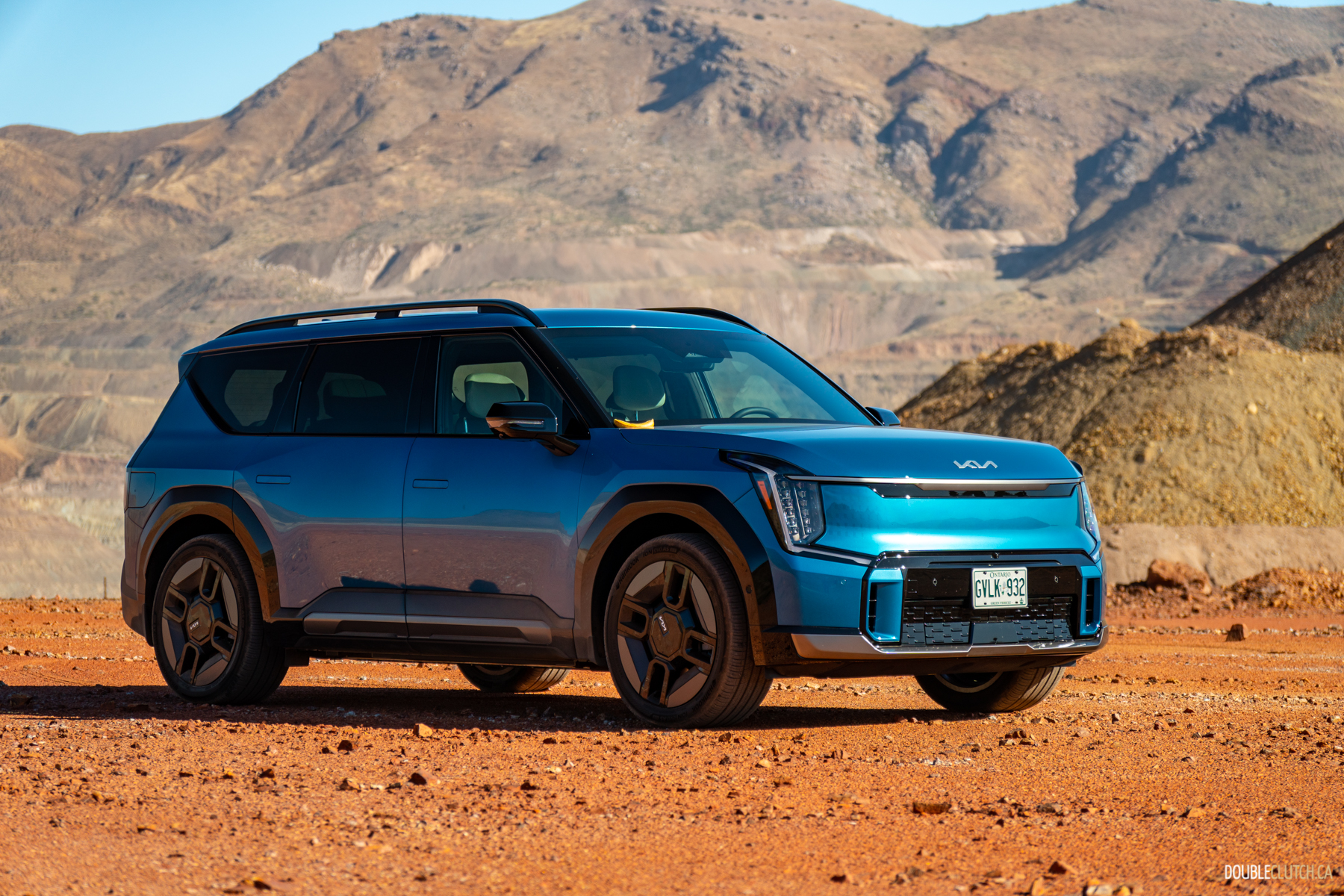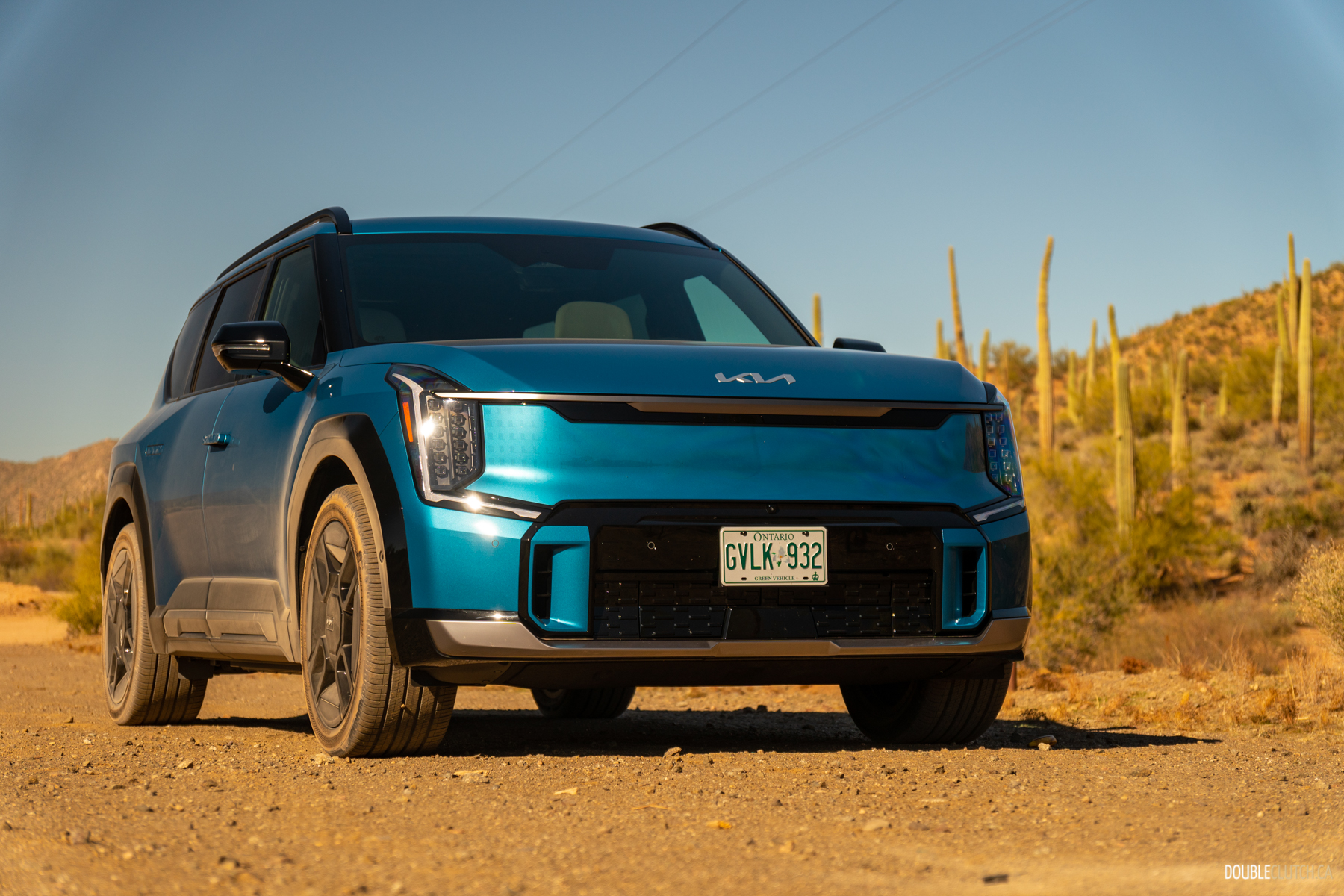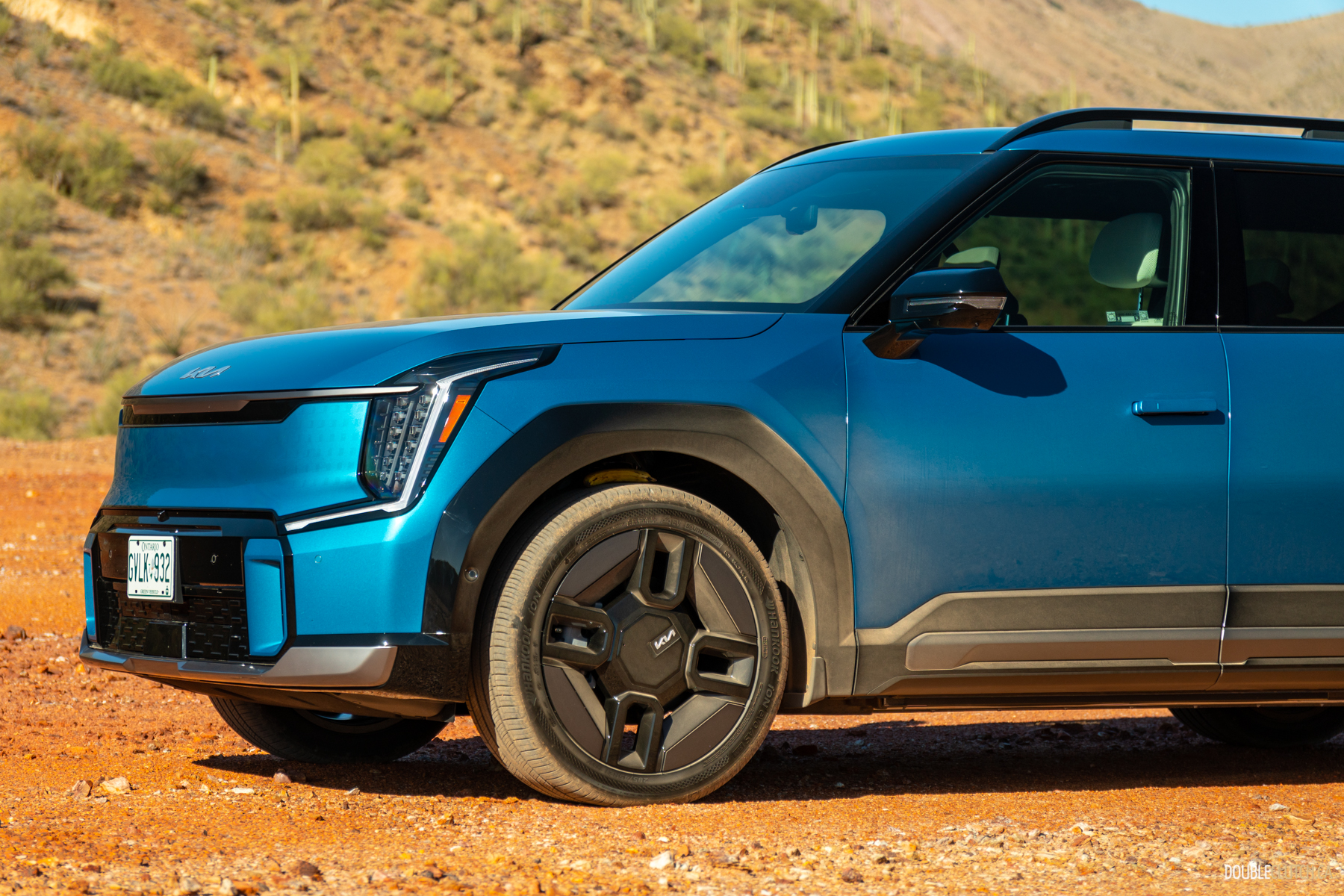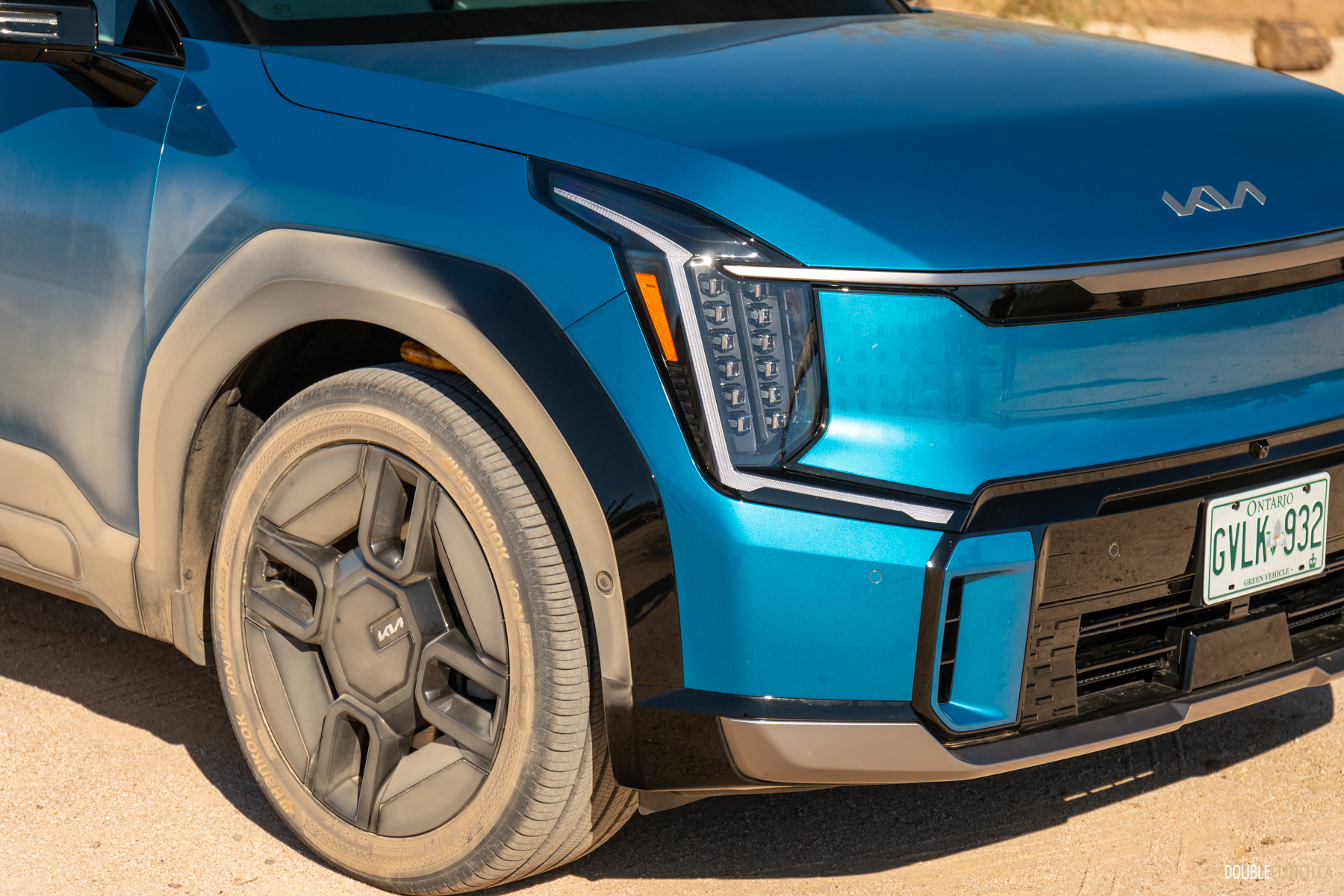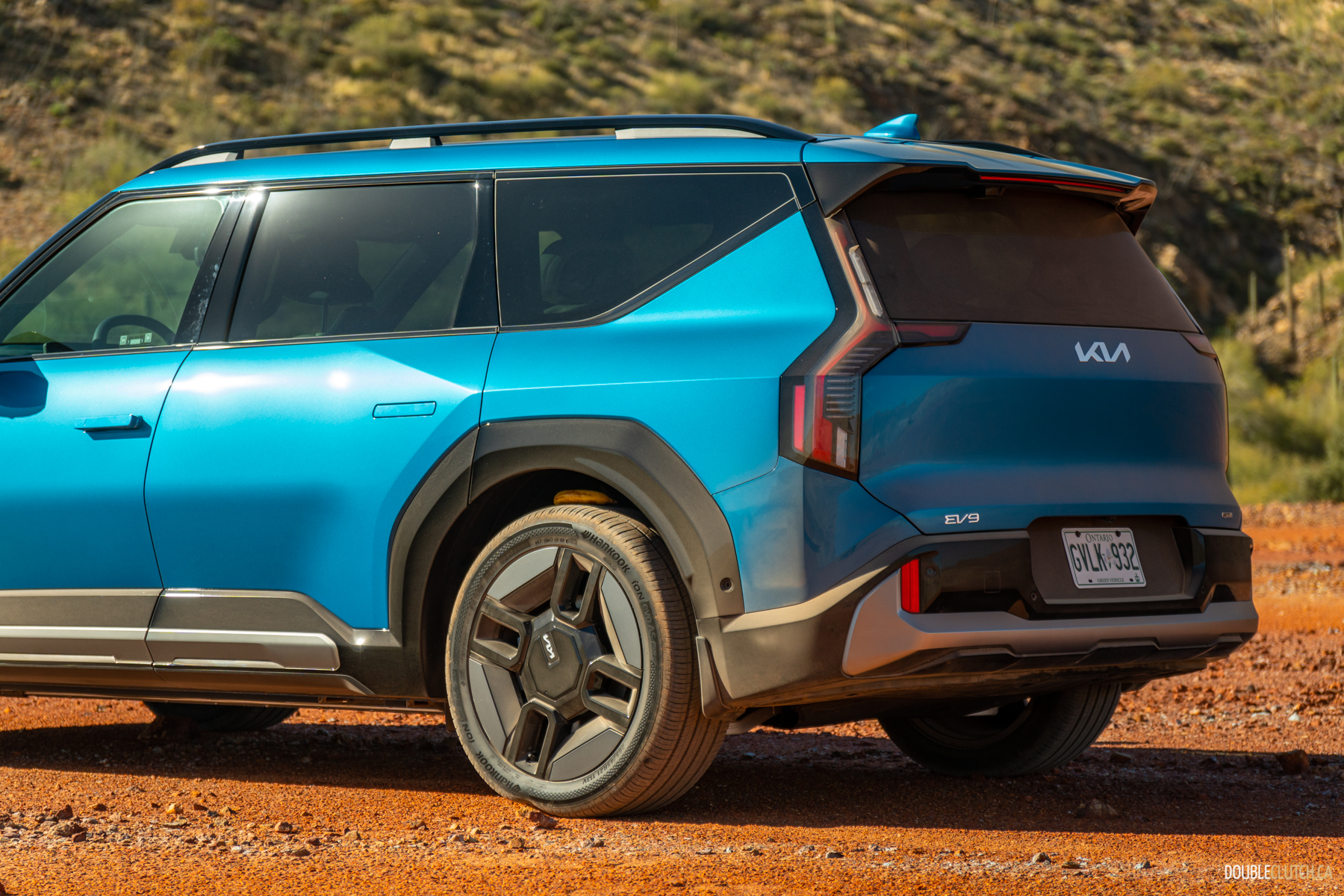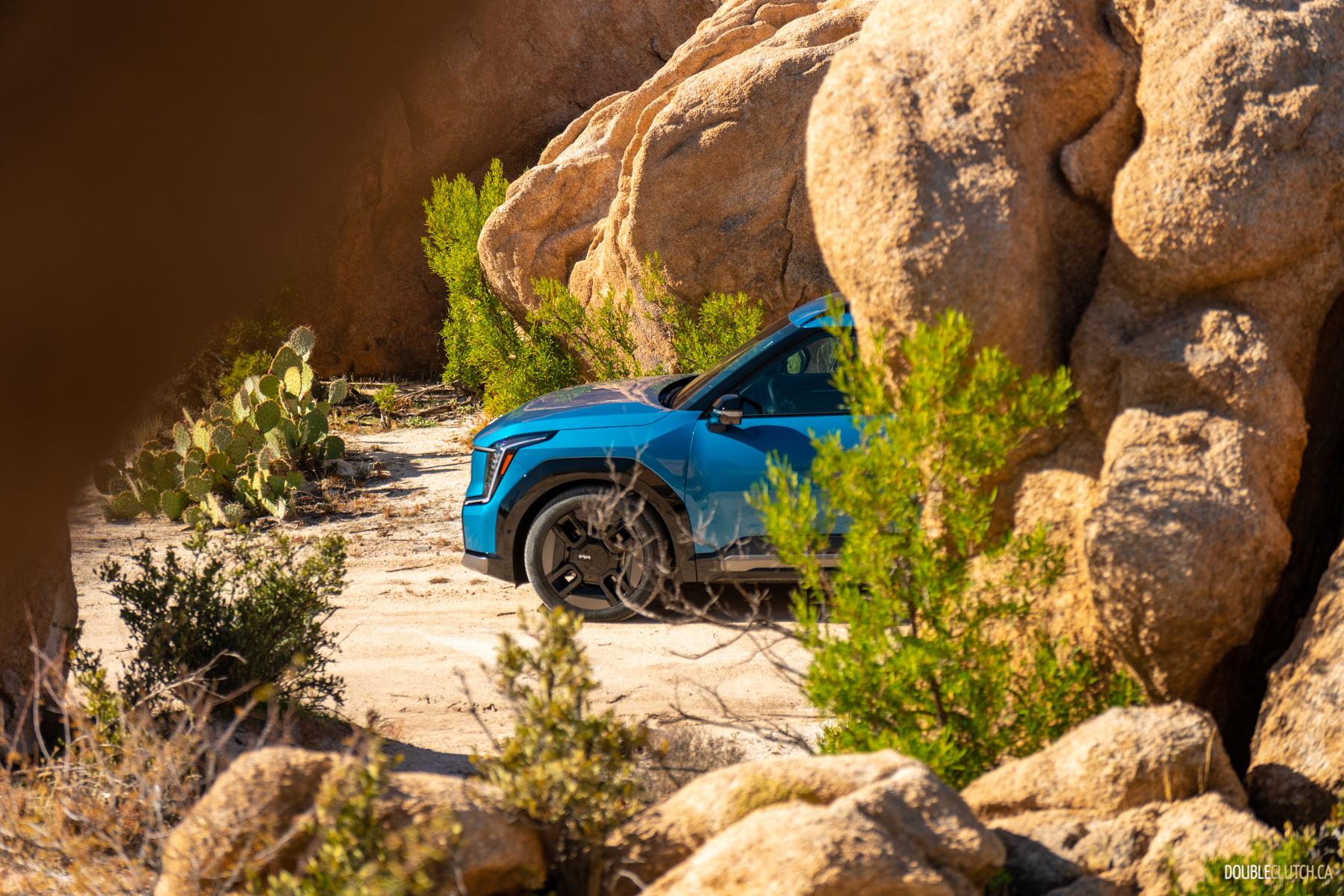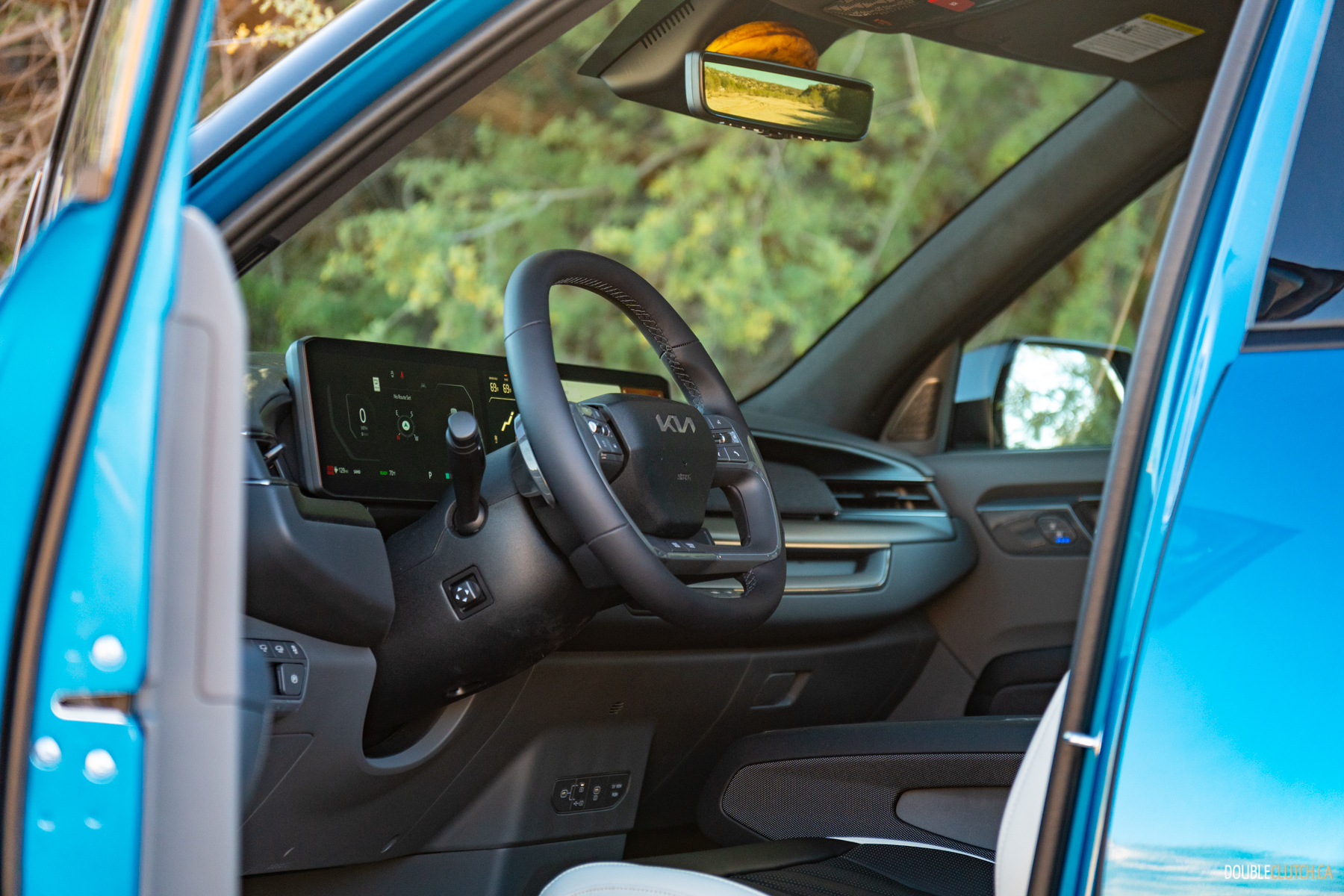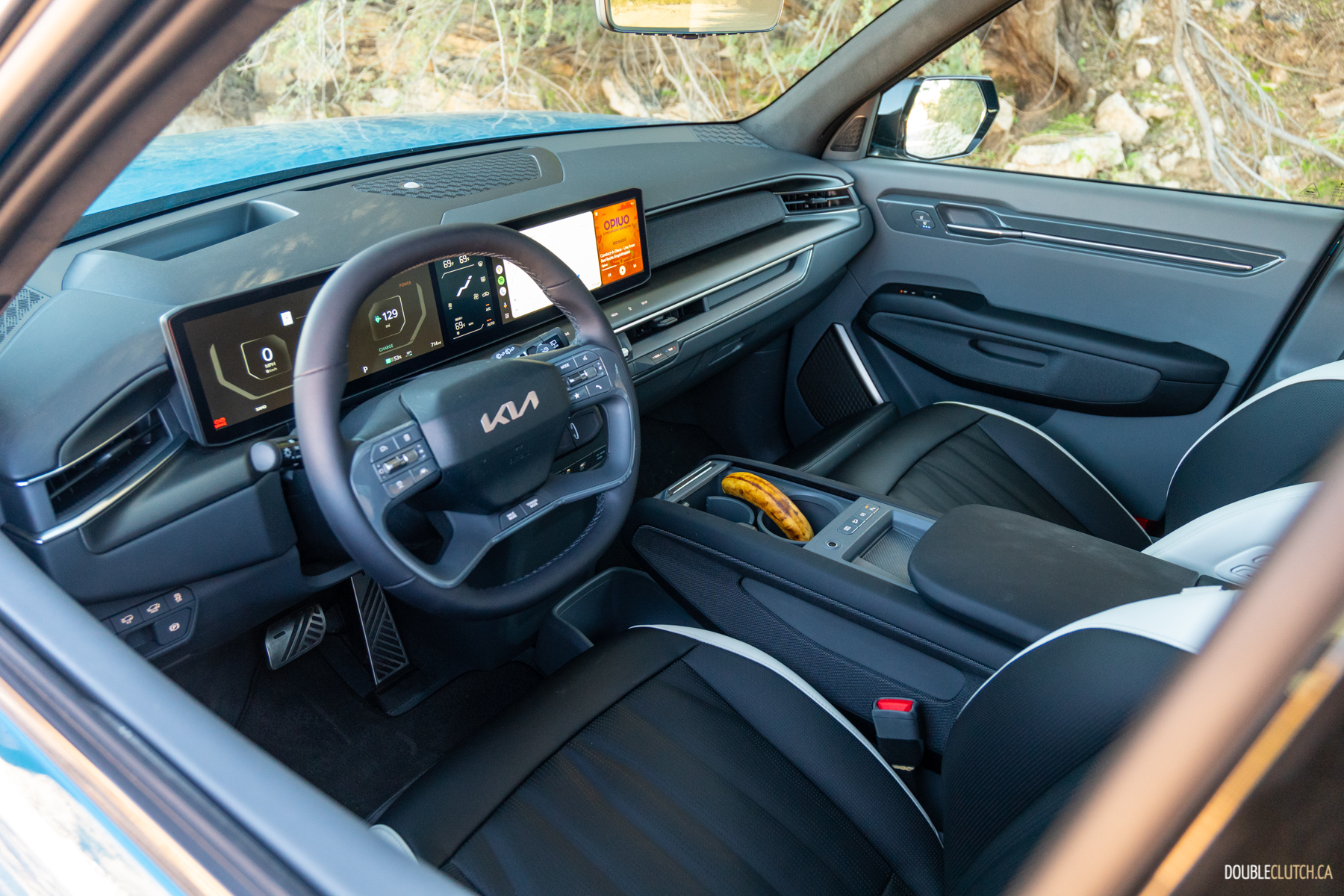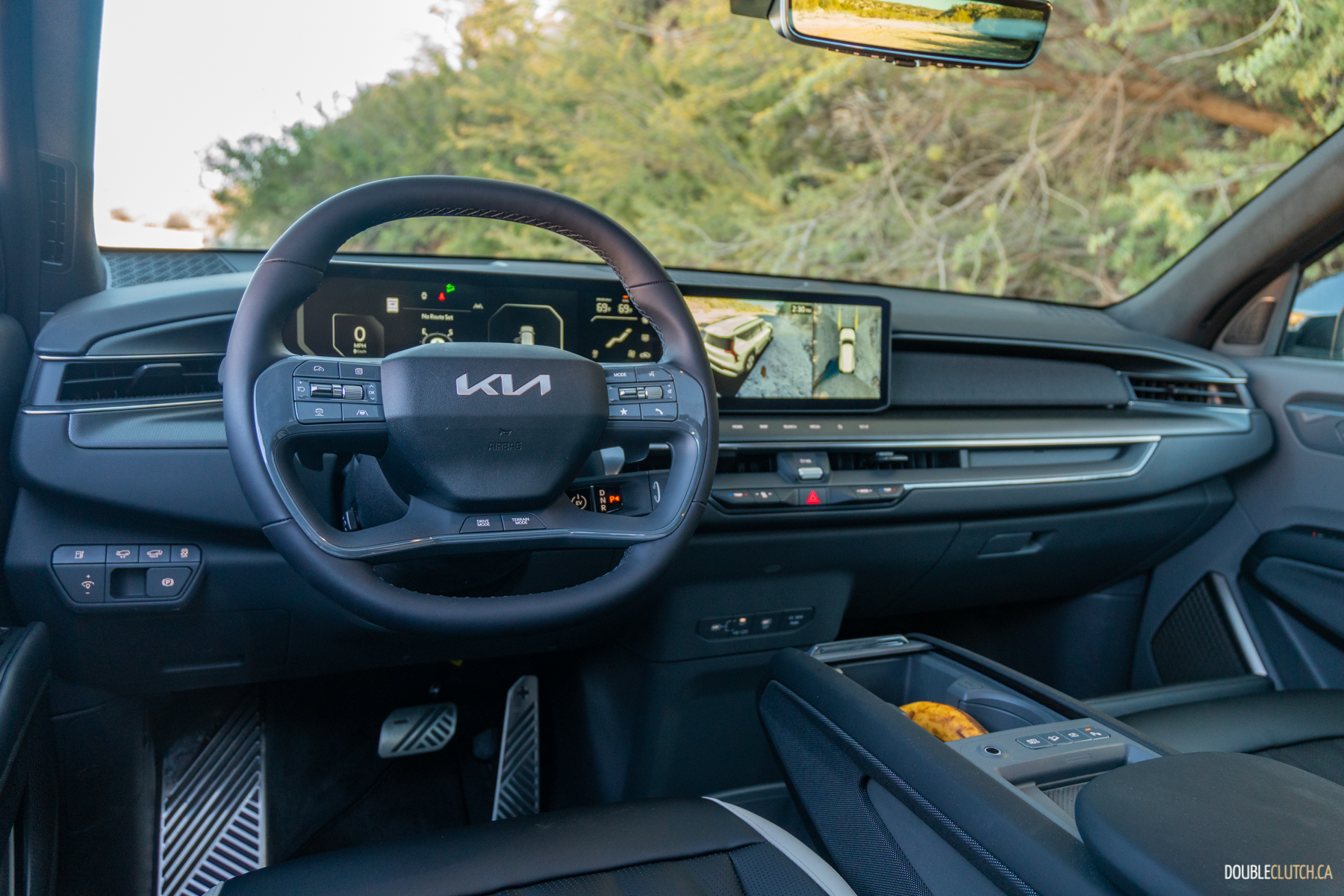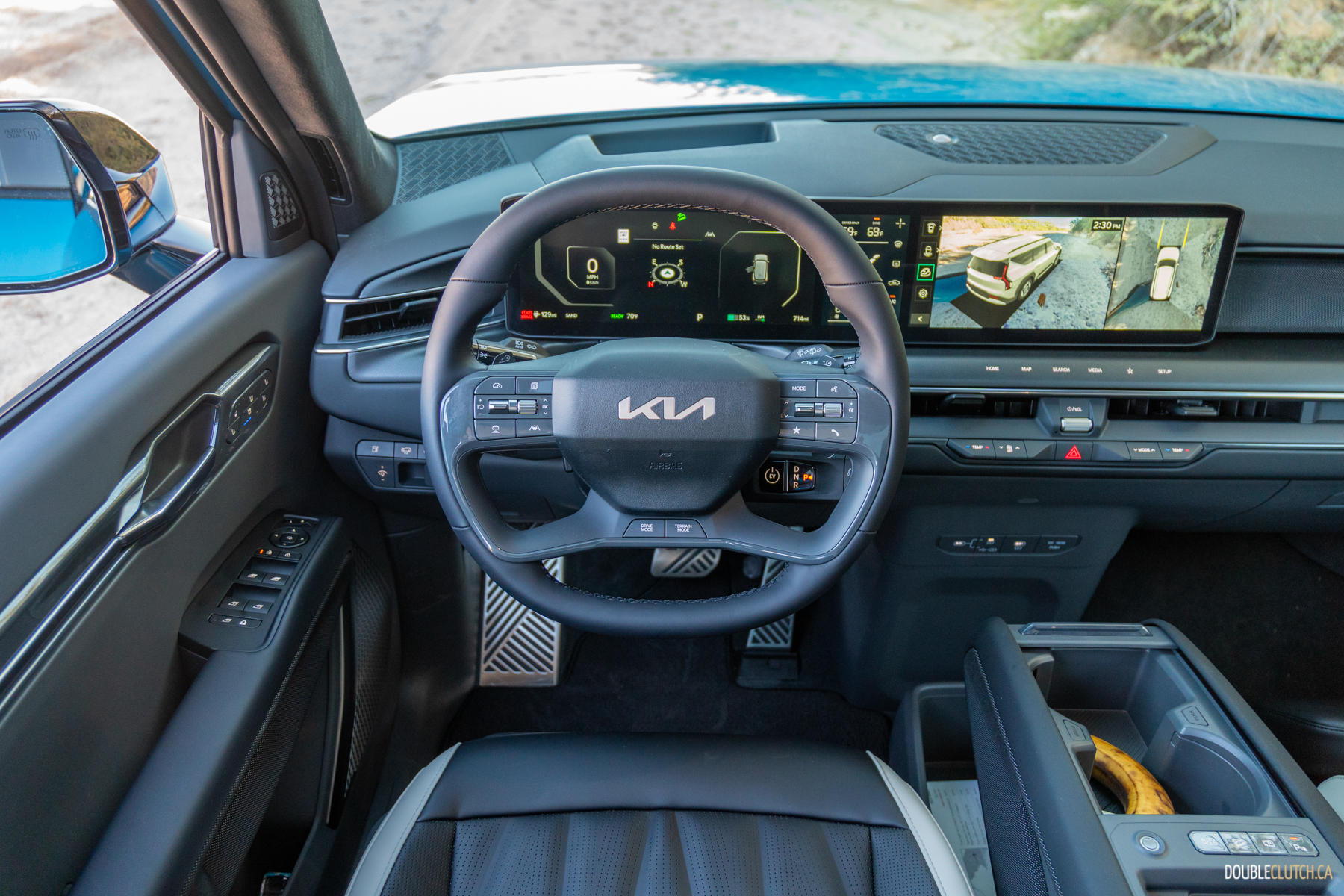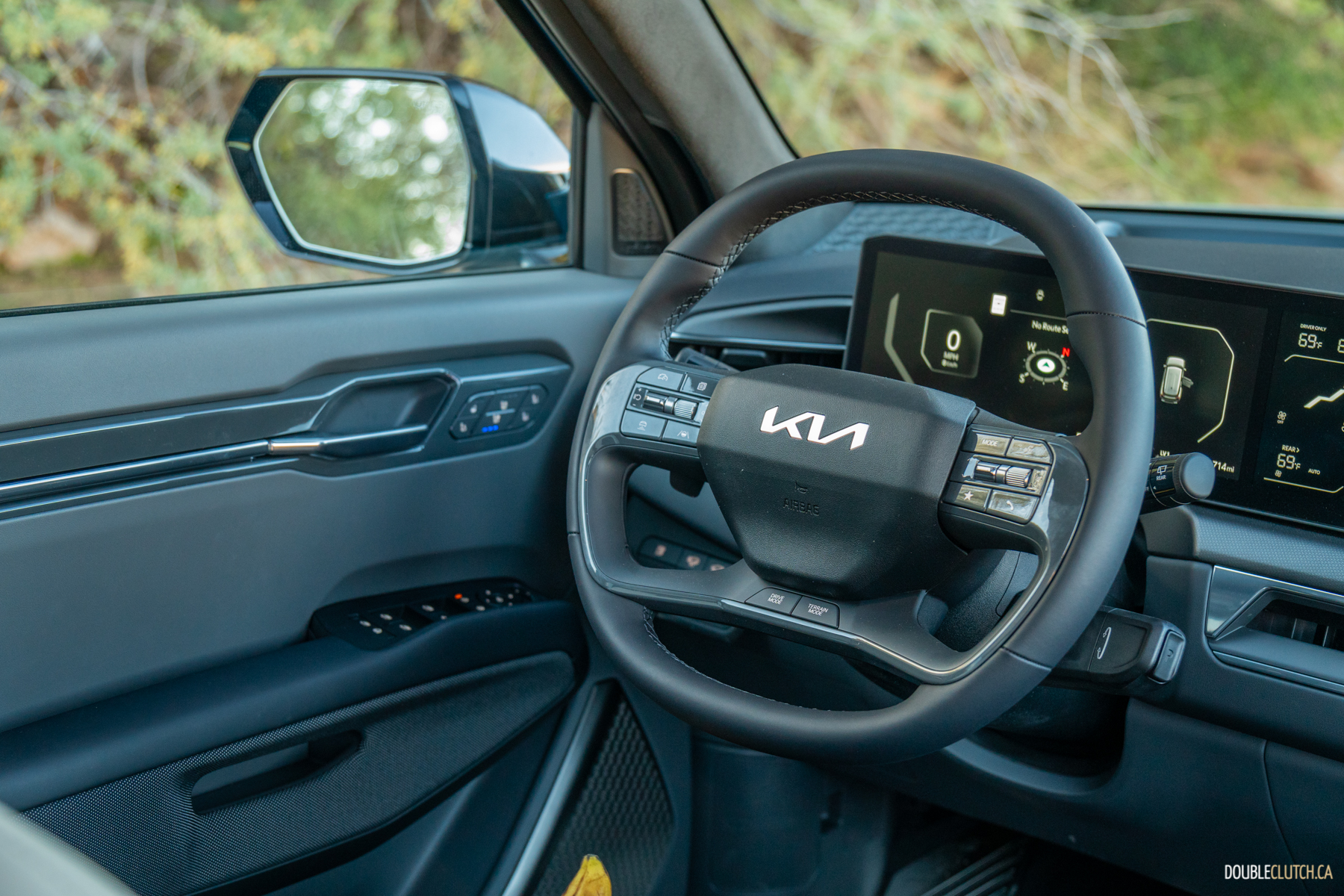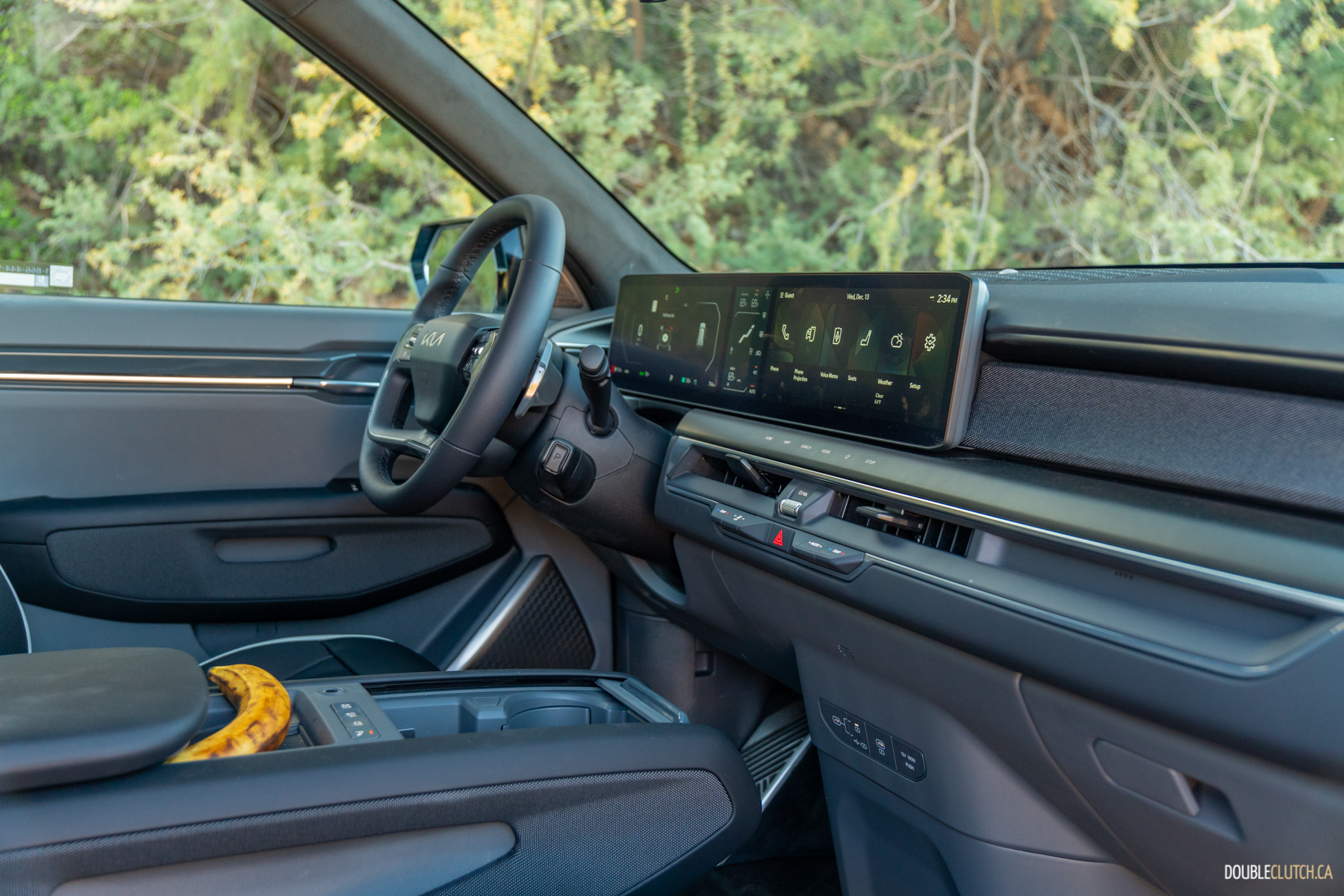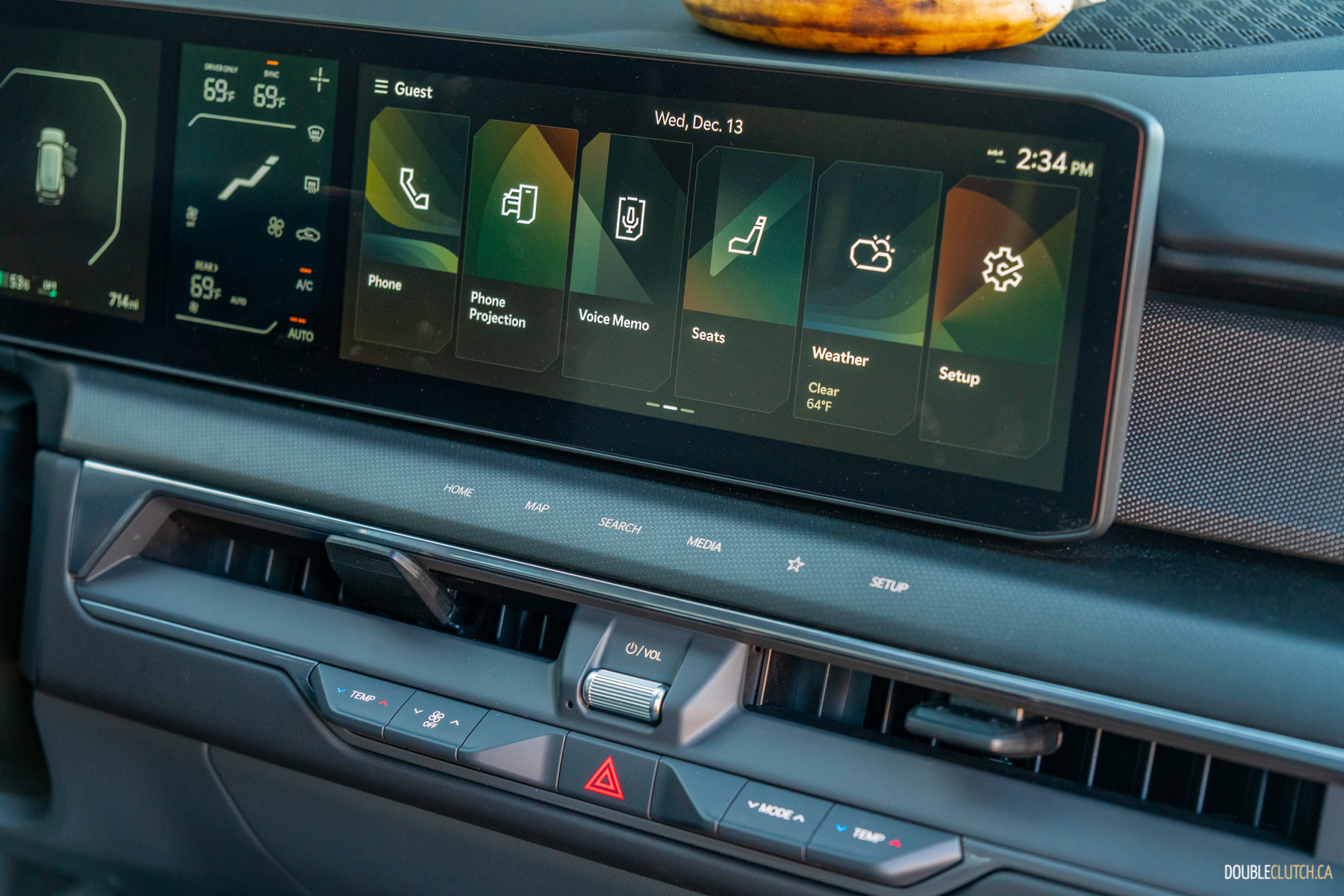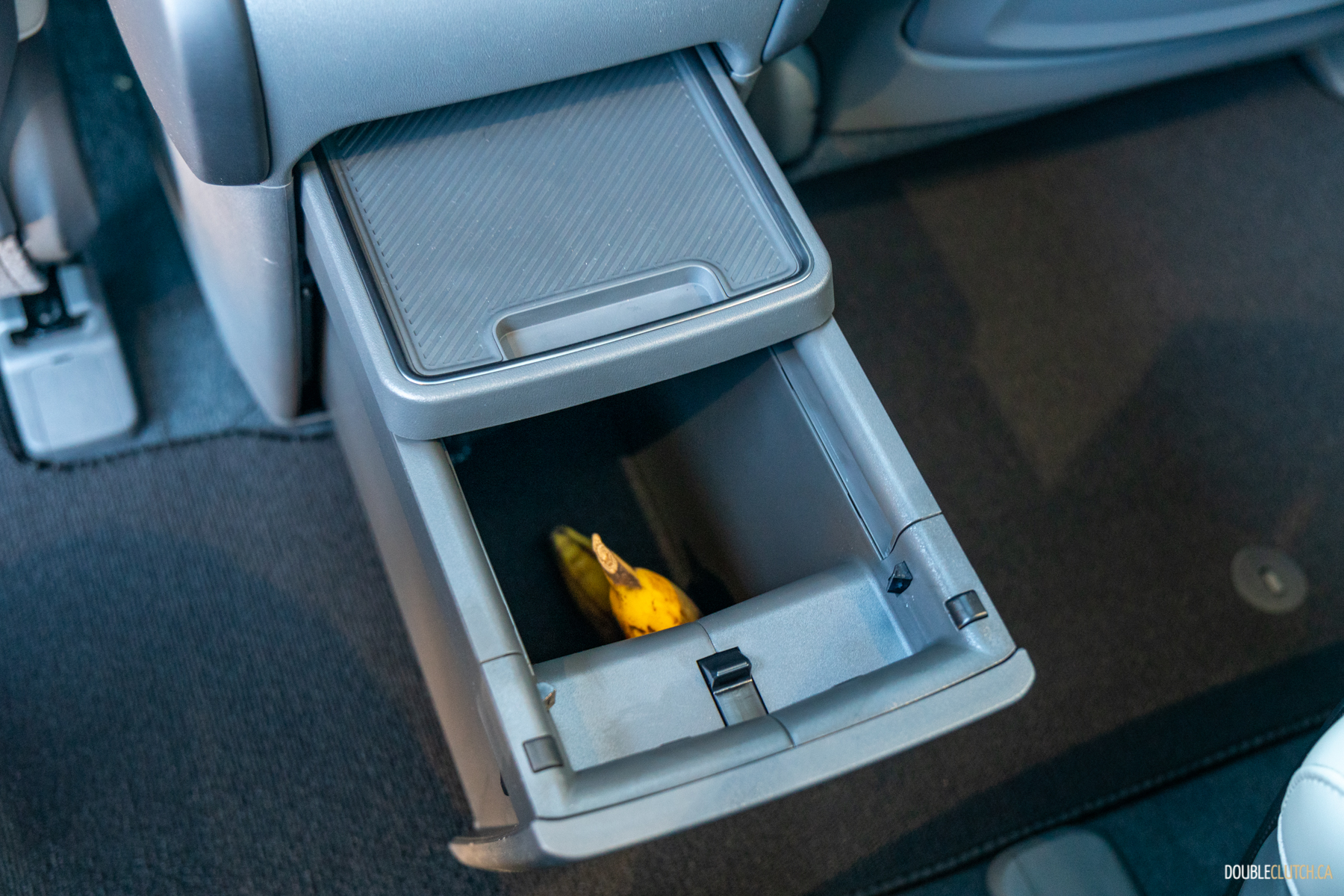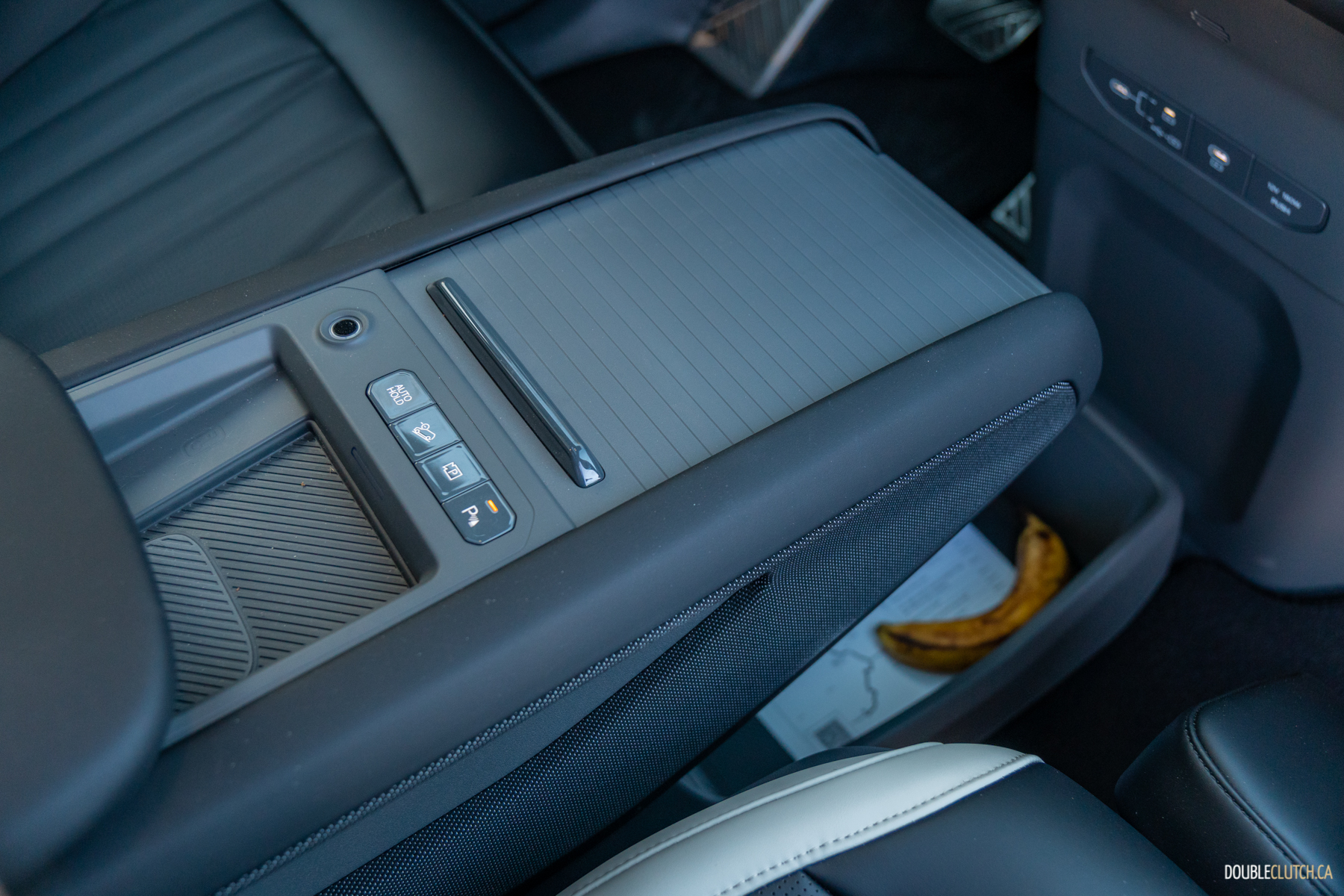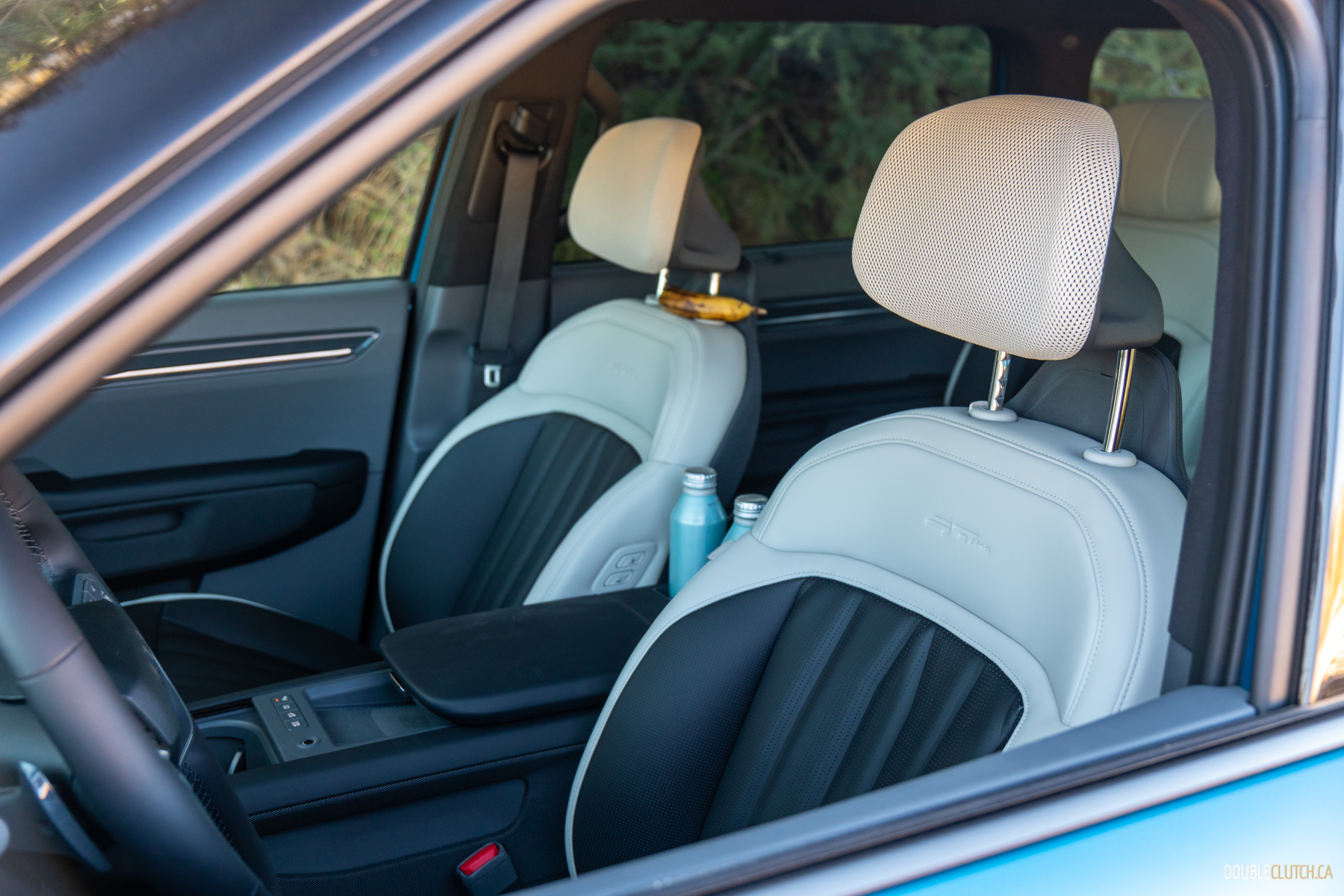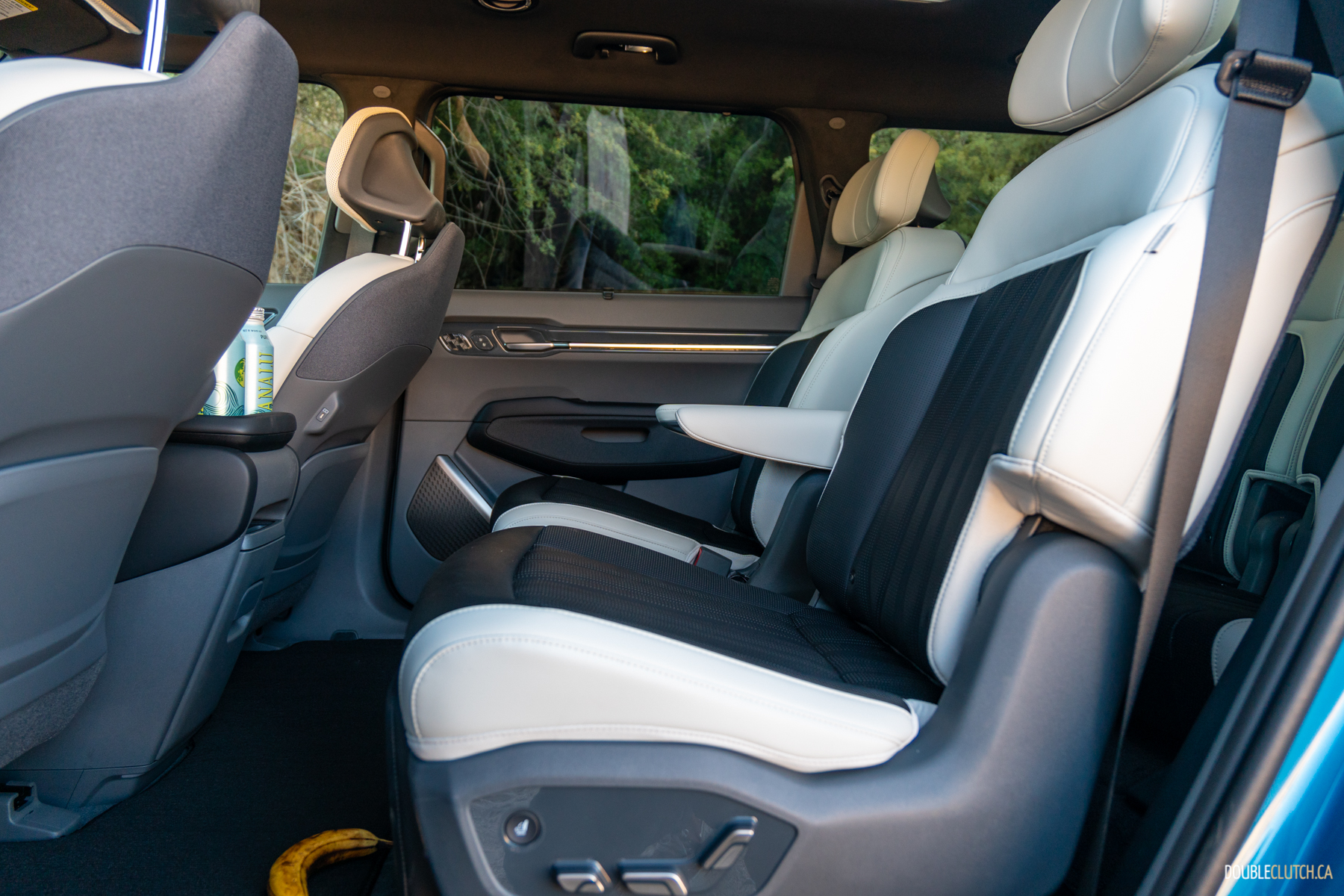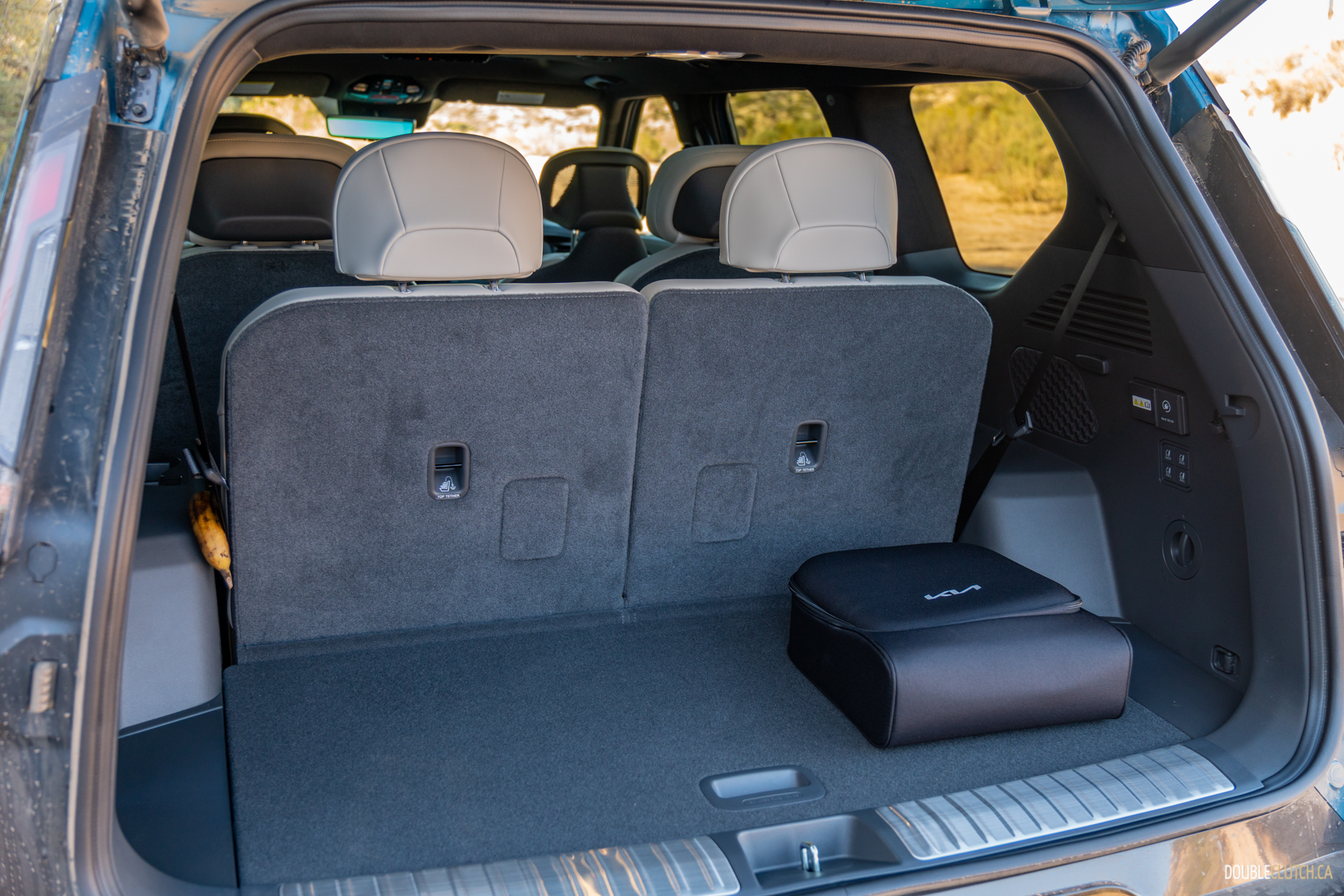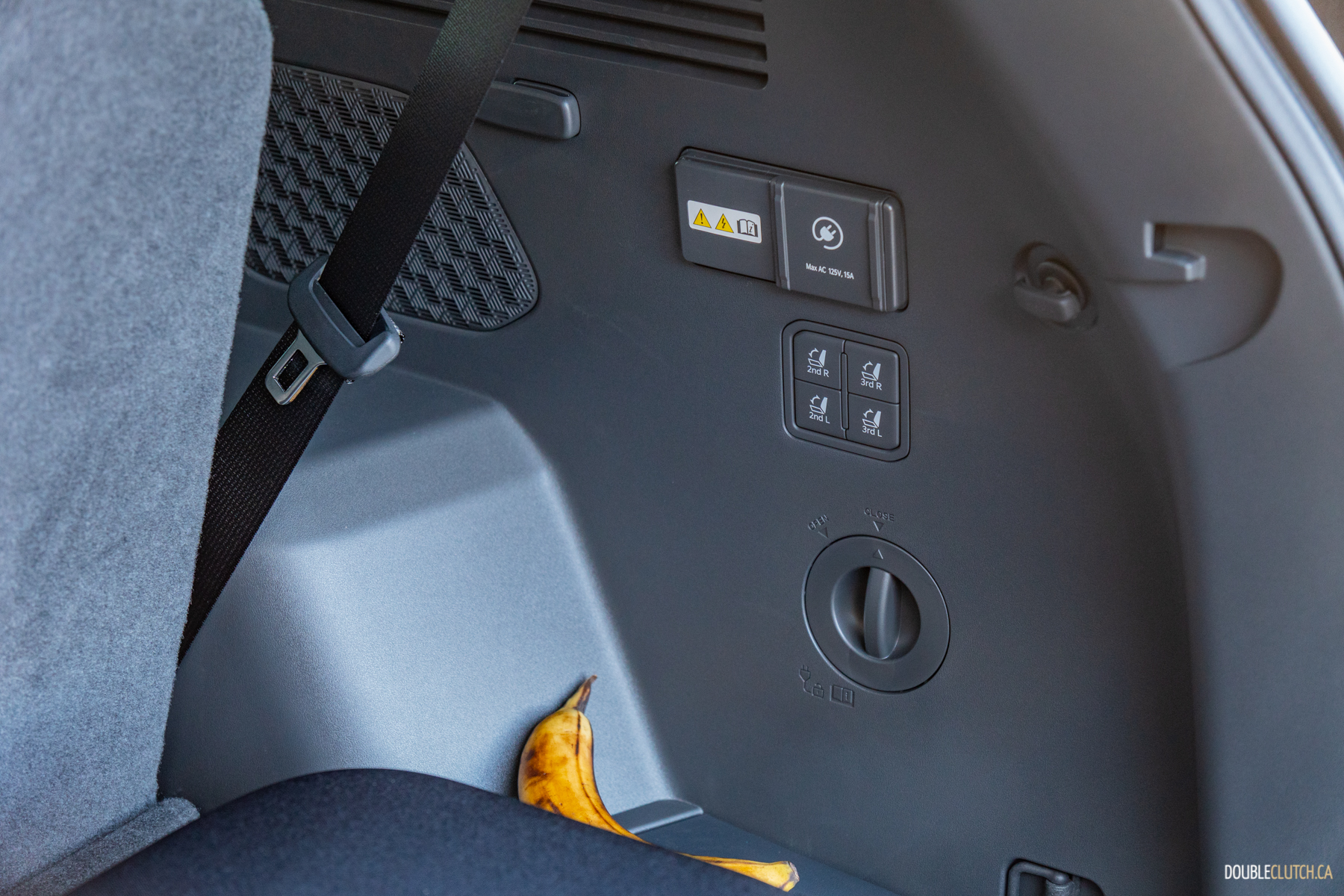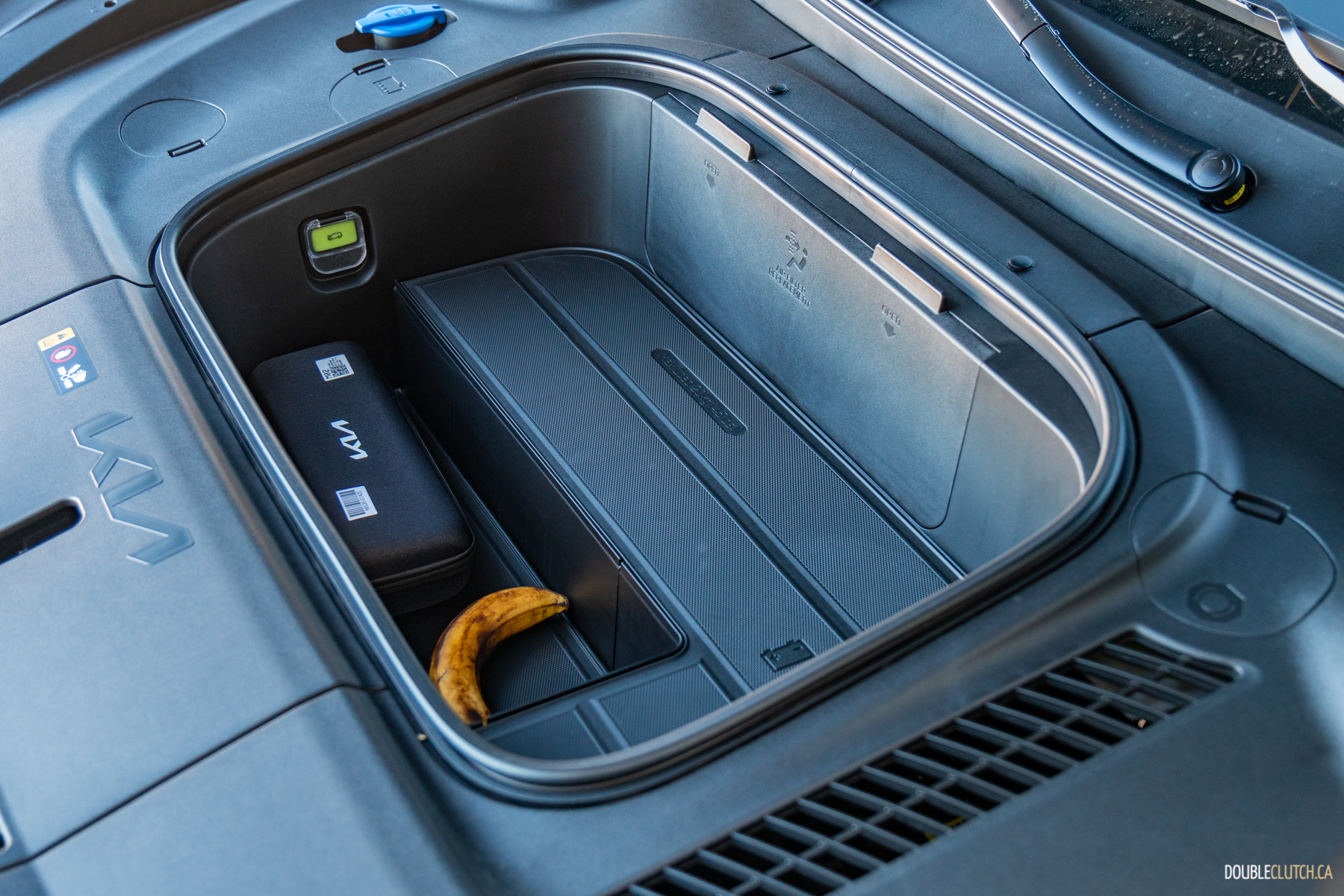SCOTTSDALE, ARIZ. — Demand for green vehicles is high and always getting higher, as the buying public wants for more sustainability, more efficiency, and more environmental consciousness. Conversely, that same buying public is also demanding ever bigger, more capable SUVs, with three-row offerings in perpetually short supply. Kia had the brilliant idea of uniting these two seemingly disparate types of vehicles, in the form the 2024 Kia EV9, the first mainstream three-row electric SUV.
The EV9 seeks to marry the wild success of the Telluride with the excellent electric powertrains we’ve seen deployed in other Hyundai and Kia vehicles, while incorporating a slew of firsts and new technology to go with it. To that end, the EV9 is highly derivative of the Telluride, being almost exactly the same size, and borrowing a similarly utilitarian, boxy design language — albeit decidedly more striking and futuristic in its approach.

It continues the “Star Map” lighting treatment we’ve seen on other Kia products and expands it, with dramatic use of LEDs on both the front and rear fascias, with the standout feature being a configurable digital grille. Wheel designs on all trims of EV9 are distinct geometric affairs, all designed to create an air curtain that reduces aerodynamic drag. On that note, despite its trucky shape, the EV9 registers an extremely impressive 0.28 aerodynamic coefficient; about the same as the much more svelte EV6.
That slippery shape enables a maximum advertised range of 489 kilometers, which is aided by new fourth-gen lithium ion battery tech. The battery packs have been rearranged internally for better coolant flow to better stay within the optimum temperature range, and have had simplified connections between cells for improved efficiency. Two sizes are available, with the Light trim getting a 76.1 kWh battery, and the Wind and Land models getting a 99.8 kWh unit. All configurations operate around 600 volts, and can charge at up to 800 volts in 24 minutes.
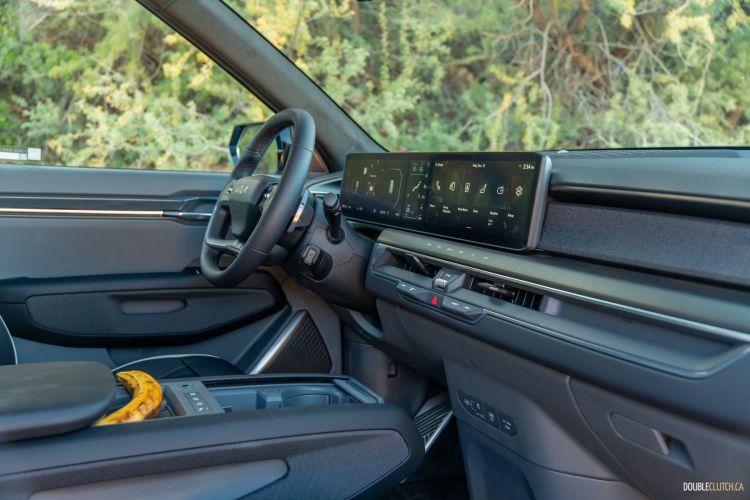
There’s lots of new in the cavernous cabin space of the EV9, but Kia’s gone to some length to ensure it feels like a traditional, practical, relaxing space, rather than leaning heavily on chic futurism. The biggest highlight is the all-new user interface that will trickle down to other models, projected on three displays housed in one ultrawide housing: two 12.3-inch units for the gauge cluster and main touch screen, with a smaller five-inch screen nestled in between for dedicated climate controls.
The new software represents a nice visual update, with excellent resolution, response, and deep black levels. It offers a very broad degree of customization, but is plenty easy to use and is flanked by physical controls for climate, and capacitive shortcut buttons hidden in the matte dashboard trim. This also marks the first Kia product capable of over-the-air software updates, which can be used for both system updates and fixes, or optional add-ons from the Kia Connect Store, like that aforementioned digital grille. The biggest highlight that most people will be going bananas for is the standard application of wireless Android Auto and Apple CarPlay on all models.
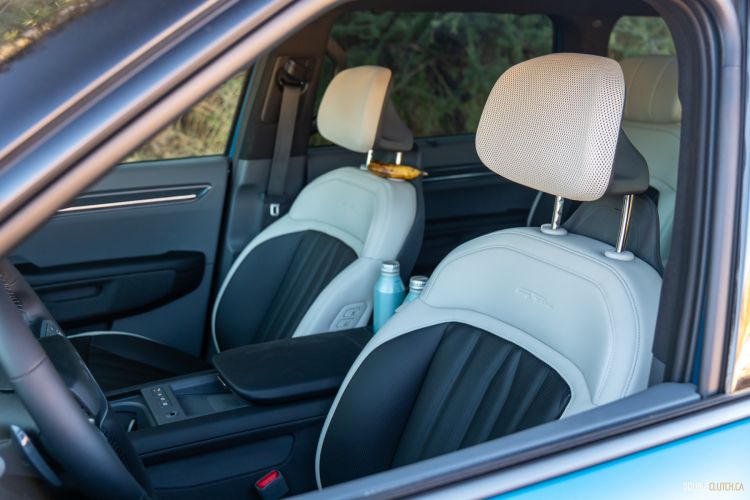
There’s been a sizable effort exerted in sustainability on the materials front, by the use of bio polyurethanes and paints, plus recycled PET felt, fabric, and carpeting throughout the EV9. There’s an impressive attention to detail with the application of those materials, like little flourishes of fabric across the dash and the backs of the seats, to help the space punch above its price bracket. There’s plenty of storage in the massive floating center console, which also has an optional slide-out storage drawer for the rear passengers, and there’s charging ports absolutely everywhere.
Speaking of space, cargo room behind the third row is generous at 573 litres, expanding to a very large 1,233 L with the third row tucked away via the power folding buttons in the cargo area, and a cavernous 2,313 with the second and third rows folded. The third row of seating is designed specifically to be usable and comfortable, offering good padding and support for extended use by real-sized adults, rather than the “it’s fine in a pinch” accommodation usually seen in this segment.
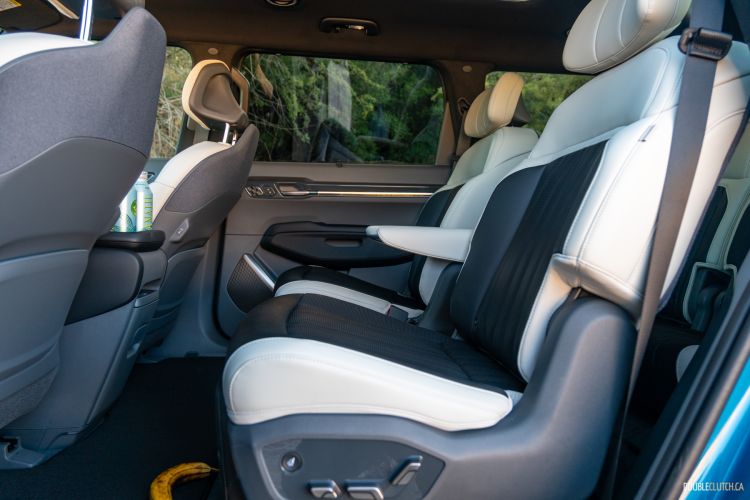
The second row in our loaded tester gets reclining captain’s chairs, with Kia’s “relaxation seat” design that features extendable lounge style thigh supports. The front seats get this same treatment, with the addition of “Ergo-motion” technology for the driver’s seat, using air bladders to create a massage effect. It can be turned on at any time, and is by default set to engage after half an hour of driving, to reduce fatigue on longer drives.
We drove the EV9 deep into the hills and mountains of Tonto National Park, testing its road manners, long-haul comfort, and to some extent, its off-road capability. I can confirm those relaxation seats are no gimmick, as it’s easy to get comfortable and stay comfortable over several hours of touring. This is in no small part aided by the exceptionally quiet nature of the EV9, with multiple layers of sound deadening underneath and acoustically laminated glass on the windshield and doors. The sensation of speed is almost eerily eliminated, with the only real sound coming from the rich Meridian sound system.
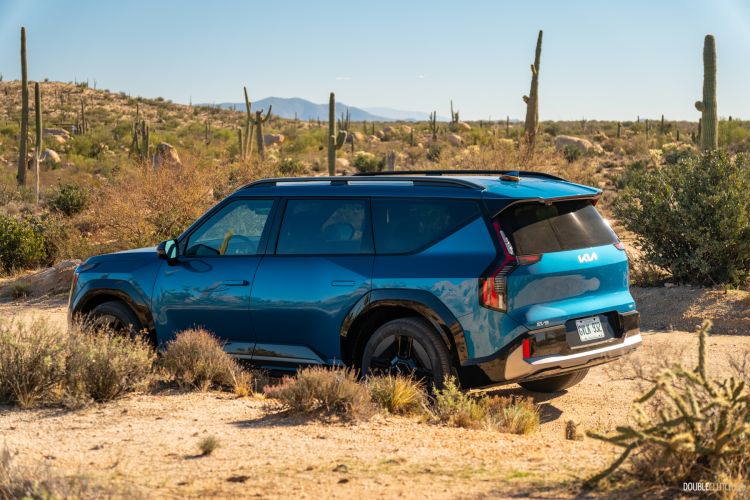
The EV9 drives well, with organically calibrated driver controls that feel natural. Its low centre of gravity and careful chassis setup hides its honking 7,000-pound mass in all but the most extreme of situations. Our tester was motivated by two motors acting on all four wheels, generating 379 horsepower and 516 pound-feet of torque, which is enough for zippy acceleration and healthy passing/merging power. But with so much mass to shift, it lacks the startling performance you might expect from other EVs.
Our test vehicle was also equipped with multiple terrain modes for mud, sand, and snow, and I can confirm they actually work. We took the EV9 off the beaten path, doing some terrain crawling into a loose sand flood plain, not realizing how challenging the surface was until we got out and watched our shoes sink into the silt. The EV9 was totally unfazed, confidently able to pull itself free and navigate the tricky terrain uphill out of the flood plain without a hitch — all the more impressive given the low-rolling-resistance tarmac tires on which it rolls.
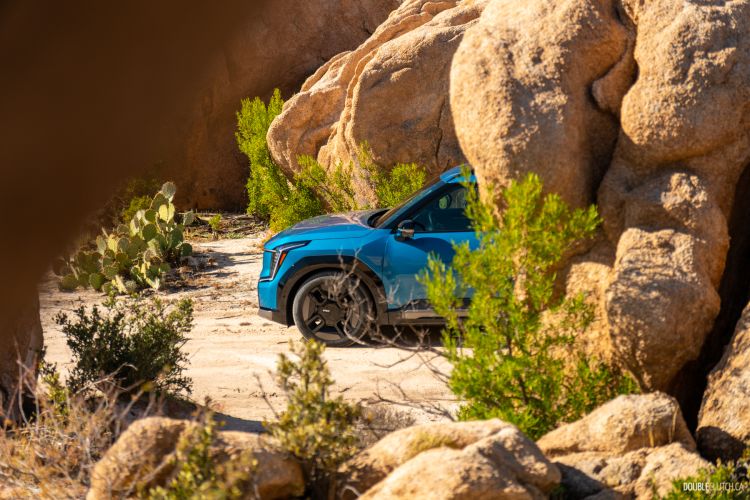
On the paved path, the EV9 is adorned with a very compliant ride, soaking up bumps and breaks in the pavement with aplomb. Kia’s adaptive cruise control and lane-tracing systems already worked well, and has been improved for this application, with better detection of the driver’s hands, as well as telegraphing how the system is interpreting the lane lanes and cars around it. It works well and represents an improvement over its predecessors, but still can be a little awkward about keeping and creating distance.
Overall, the 2024 Kia EV9 is an extremely impressive new entry into the EV segment. Kia clearly done their homework and went to great lengths to offer handsome, modern styling and a thoughtful, commodious cabin with all the performance, range, and tech features you could ever want in a modern vehicle, and all done at an aggressive price point. Prices start at $59,995 for a base model, going up to $78,995 for our decked-out GT-Line tester; the cheapest big battery, dual motor, all-wheel-drive- equipped model starts at $64,995. Deliveries have already begun, so you can expect to start seeing a lot of these on the road very soon.

